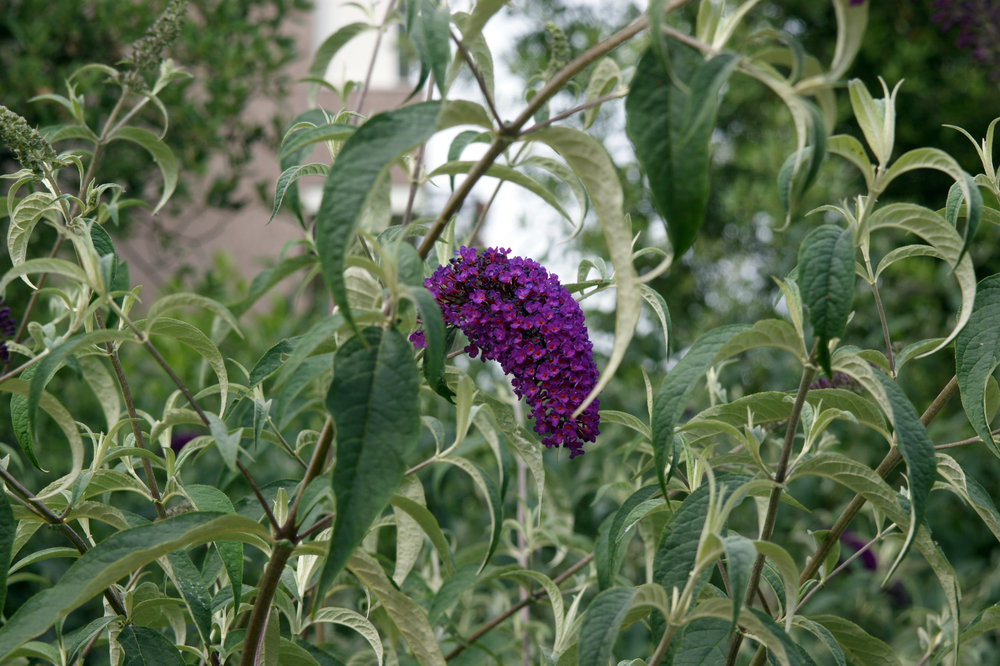Buddleja Black Knight 300mm pot size SHRUB EVERGREEN
$38.00
Buddleja is a genus of around 100 species of deciduous or evergreen shrubs and small trees native to Asia, Africa, and the Americas. Here are some horticultural notes and uses for Buddleja:
Growing Conditions: Buddleja prefers well-draining soil and full sun to partial shade. They are hardy plants and can tolerate a range of temperatures and soil types.
Watering: Adequate watering is important for the growth of Buddleja. The plants should be watered regularly, especially during the growing season. Care should be taken not to overwater the plants, as this can lead to root rot.
Fertilizing: Buddleja can benefit from regular fertilization during the growing season. Use a balanced fertilizer that contains equal amounts of nitrogen, phosphorus, and potassium.
Pruning: Pruning Buddleja is important to maintain their shape and size. Pruning should be done in late winter or early spring, before new growth starts. Remove any dead or diseased branches, as well as any branches that are crossing or rubbing against each other.
Propagation: Buddleja can be propagated through seed or cuttings. Cuttings should be taken in the summer and planted in a well-draining potting mix. Keep the cuttings in a warm, humid location until they have rooted.
Pests and Diseases: Buddleja is relatively pest and disease-free, but can be susceptible to spider mites and root rot.
Uses: Buddleja is a popular plant for landscaping and is often used as a hedge, in group plantings, or as a specimen plant. They are also used for their ornamental value, with their showy purple, pink, or white flowers adding colour and interest to any garden or landscape.
Varieties: There are several Buddleja species and cultivars available, each with its own unique characteristics. Some popular varieties include Buddleja davidii, with pink or purple flowers and gray-green leaves, and Buddleja globosa, with orange flowers and dark green leaves.
Out of stock
Description
- Family Name: Scrophulariaceae
- Origin: Asia
- Characteristics:
- Foliage Colours: Green, Purple
- Flower Colours: Insignificant
- Flower Fragrant: No
- Flowering Season: All Year
- Fruit: No
- Landscape Use(s): Bird Attracting, Borders / Shrubbery,
Container / Pot, Cottage Garden, Courtyard, Cut Flower,
Feature, Foliage Feature / Colour, Formal Garden, Fragrant
Garden, Low Water Garden, Mass Planting
- Pest & Diseases: Generally Trouble Free
- Plant Care: Annual Slow Release Fertiliser, Keep Moist During Dry Periods, Mulch Well
- Requirements:
- Growth Rate: Fast
- Maintenance Level: Low
- Water Usage: Low
- Tolerances:
- Drought: Moderate
- Frost: Moderate
- Wind: Moderate
- Cultural Notes: If planting in a large pot, use a good quality potting mixture. Garden soils should be well prepared with cultivation of the area
and adding garden compost to the mix. Most soil types are suitable; an application of a complete fertiliser to the garden bed in spring after
the main pruning promotes vigorous growth. In winter temperatures to 5°C are tolerated but heavy frosts will cut them back. During the year
trim back the older growth when flowers are showing signs of slowing off and getting smaller. The use of a slow release fertiliser is
recommended for pot grown specimens. Information and images courtesy of Aussie Winners.


